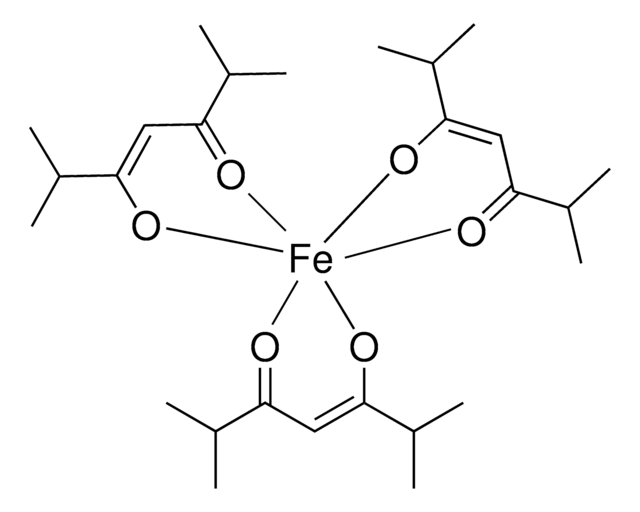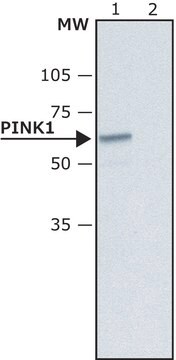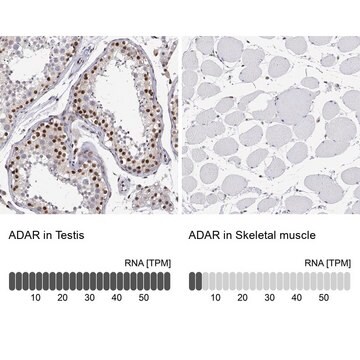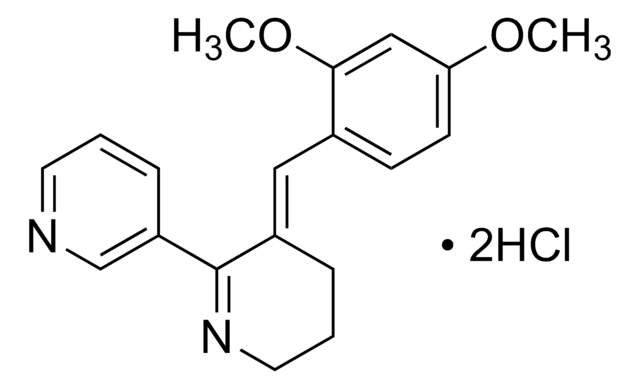推荐产品
一般說明
Activating transcription factor 3 (ATF3) is encoded by the gene mapped to human chromosome 1q. It belongs to the ATF/cAMP response element binding (CREB) family of transcription factors. The encoded protein contains a basic region involved in specific DNA binding, and a leucine zipper (bZIP) motif responsible for forming homodimers or heterodimers with other bZIP-containing proteins. ATF3 protein is expressed at low levels in normal and quiescent cells, but its expression is triggered on exposure to extracellular signals such as, growth factors, cytokines and some genotoxic stress agents.
Activating transcription factor 3 is a member of the mammalian activation transcription factor/cAMP responsive element-binding (CREB) protein family of transcription factors. Multiple transcript variants encoding two different isoforms have been found for this gene. The longer isoform represses rather than activates transcription from promoters with ATF binding elements. The shorter isoform (deltaZip2) lacks the leucine zipper protein-dimerization motif and does not bind to DNA, and it stimulates transcription presumably by sequestering inhibitory co-factors away from the promoter. It is possible that alternative splicing of the ATF3 gene may be physiologically important in the regulation of target genes. (provided by RefSeq)
免疫原
ATF3 (AAH06322, 1 a.a. ~ 181 a.a) full-length recombinant protein with GST tag. MW of the GST tag alone is 26 KDa.
Sequence
MMLQHPGQVSASEVSASAIVPCLSPPGSLVFEDFANLTPFVKEELRFAIQNKHLCHRMSSALESVTVSDRPLGVSITKAEVAPEEDERKKRRRERNKIAAAKCRNKKKEKTECLQKESEKLESVNAELKAQIEELKNEKQHLIYMLNLHRPTCIVRAQNGRTPEDERNLFIQQIKEGTLQS
Sequence
MMLQHPGQVSASEVSASAIVPCLSPPGSLVFEDFANLTPFVKEELRFAIQNKHLCHRMSSALESVTVSDRPLGVSITKAEVAPEEDERKKRRRERNKIAAAKCRNKKKEKTECLQKESEKLESVNAELKAQIEELKNEKQHLIYMLNLHRPTCIVRAQNGRTPEDERNLFIQQIKEGTLQS
生化/生理作用
Activating transcription factor 3 (ATF3) plays a vital role as a novel neuronal marker of nerve injury in the nervous system. ATF3 negatively regulates toll-like receptors (TLR)-stimulated inflammatory response. The encoded protein possibly plays an essential role in homeostasis, wound healing, cell adhesion, cancer cell invasion, apoptosis and signaling pathways. Over-expression of this protein stops cell cycle progression. Increased expression of ATF3 on exposure to stress signals or DNA damage, is regulated by various signaling pathway including, p53-dependent and -independent pathways, and may also involve mitogen-activated protein (MAP) kinase signaling pathways.
ATF3 plays bifurcated roles in cancer development by stimulating apoptosis in the untransformed MCF10A (a breast cancer progression cell line) mammary epithelial cells and also conserve aggressive MCF10CA1a cells and promotes its cell motility.
ATF3 plays bifurcated roles in cancer development by stimulating apoptosis in the untransformed MCF10A (a breast cancer progression cell line) mammary epithelial cells and also conserve aggressive MCF10CA1a cells and promotes its cell motility.
外觀
Solution in phosphate buffered saline, pH 7.4
未找到合适的产品?
试试我们的产品选型工具.
儲存類別代碼
10 - Combustible liquids
閃點(°F)
Not applicable
閃點(°C)
Not applicable
H Tsujino et al.
Molecular and cellular neurosciences, 15(2), 170-182 (2000-02-16)
Activating transcription factor 3 (ATF3), a member of ATF/CREB family of transcription factors, is induced in a variety of stressed tissue. ATF3 regulates transcription by binding to DNA sites as a homodimer or heterodimer with Jun proteins. The purpose of
Matthew R Thompson et al.
Journal of molecular medicine (Berlin, Germany), 87(11), 1053-1060 (2009-08-26)
Activating transcription factor 3 (ATF3) is a member of the ATF/cyclic AMP response element-binding (ATF/CREB) family of transcription factors. It is an adaptive-response gene that participates in cellular processes to adapt to extra- and/or intracellular changes, where it transduces signals
X Yin et al.
Oncogene, 27(15), 2118-2127 (2007-10-24)
Activating transcription factor 3 (ATF3) is a member of the ATF/cyclic AMP response element-binding family of transcription factors. We present evidence that ATF3 has a dichotomous role in cancer development. By both gain- and loss-of-function approaches, we found that ATF3
Mark Gilchrist et al.
Nature, 441(7090), 173-178 (2006-05-12)
The innate immune system is absolutely required for host defence, but, uncontrolled, it leads to inflammatory disease. This control is mediated, in part, by cytokines that are secreted by macrophages. Immune regulation is extraordinarily complex, and can be best investigated
T Hai et al.
Gene expression, 7(4-6), 321-335 (1999-08-10)
The purpose of this review is to discuss ATF3, a member of the ATF/CREB family of transcription factors, and its roles in stress responses. In the introduction, we briefly describe the ATF/CREB family, which contains more than 10 proteins with
我们的科学家团队拥有各种研究领域经验,包括生命科学、材料科学、化学合成、色谱、分析及许多其他领域.
联系技术服务部门








